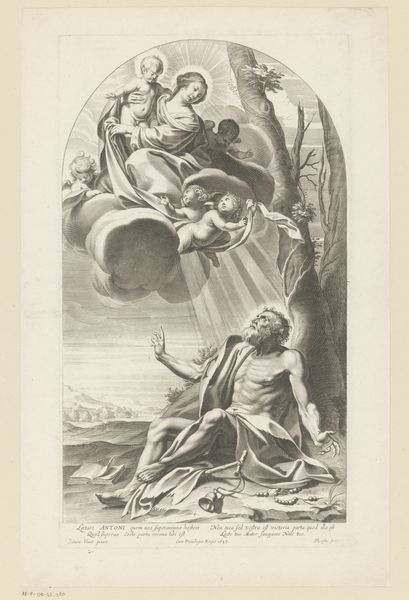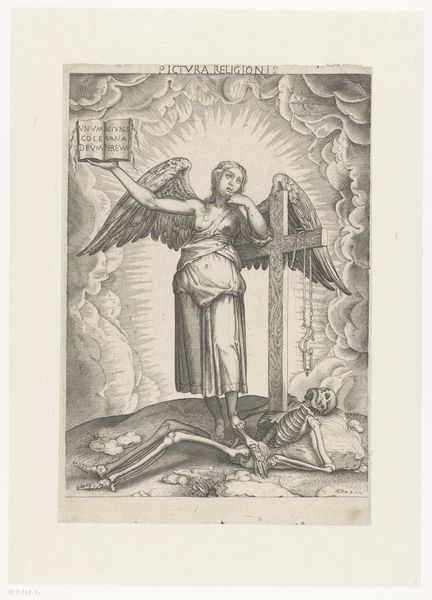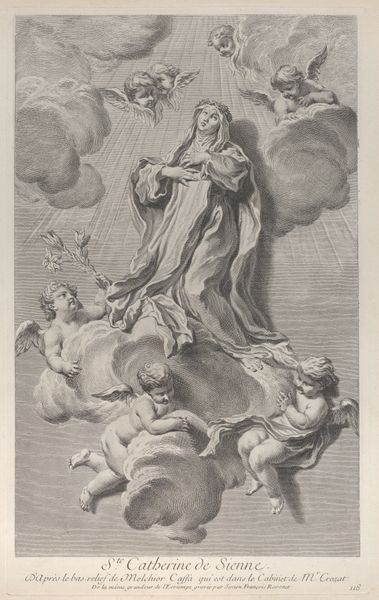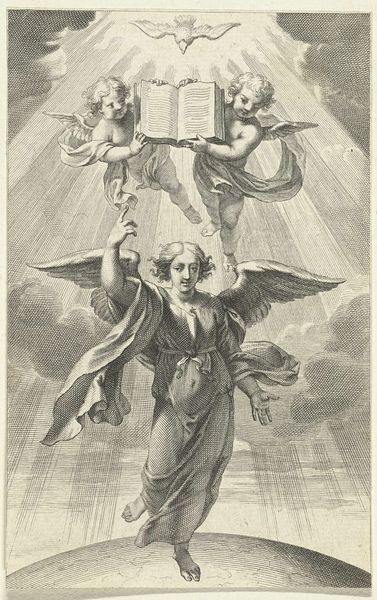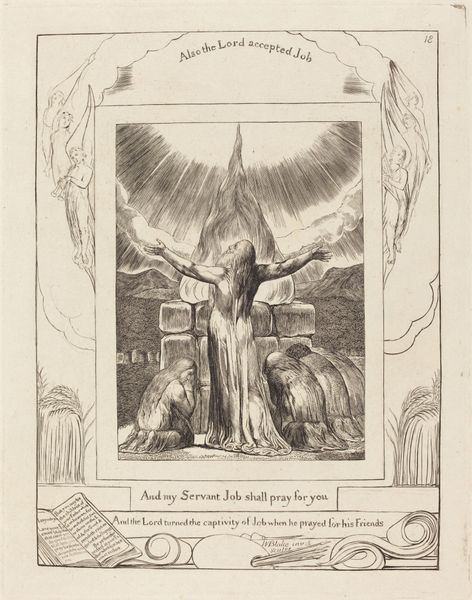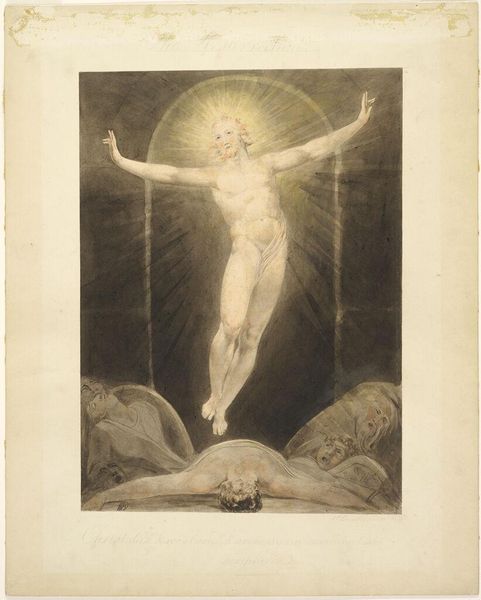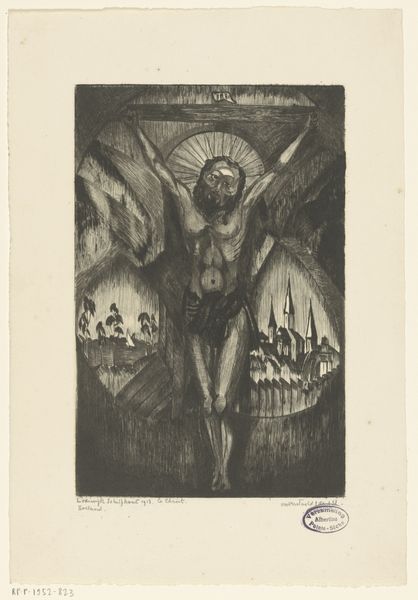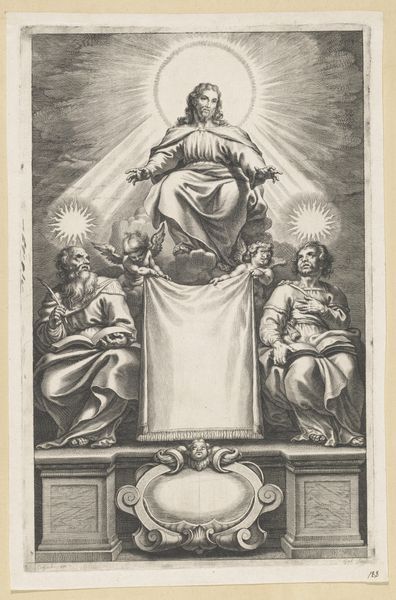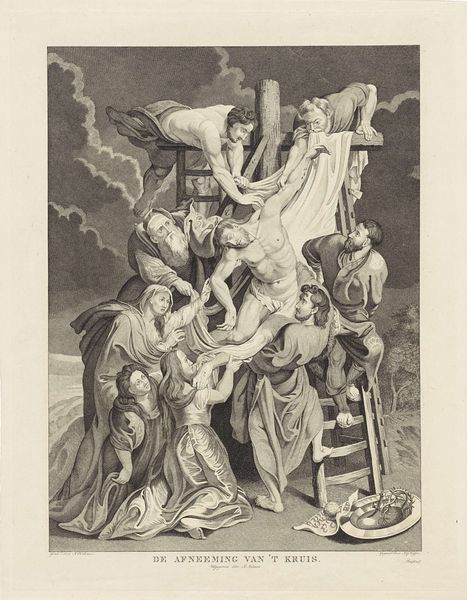
De morgenster van de overwinning op de verslagen overblijfselen van het leger van Napoleon 1814
0:00
0:00
Dimensions: height 489 mm, width 390 mm, height 610 mm, width 450 mm
Copyright: Rijks Museum: Open Domain
Curator: A radiant being stands triumphant atop the world, issuing a clarion call—quite the composition. Editor: Indeed. We are viewing George Kockers’ engraving from 1814, housed in the Rijksmuseum. The full title is “De morgenster van de overwinning op de verslagen overblijfselen van het leger van Napoleon,” or, “The Morning Star of Victory over the Defeated Remains of Napoleon’s Army.” It’s… overwrought, but captivating. Curator: Overwrought? It’s symbolic, not merely representational! The angel, rendered with striking chiaroscuro effects typical of the baroque style, embodies a carefully constructed semiotic system. Notice the celestial light emanating behind her. Editor: I note it. But that very celestial light washes over the literal remains of Napoleon’s army, rendered as discarded weapons and bodies beneath the clouds. Kockers made this shortly after Napoleon’s defeat and the restoration of the House of Orange. There’s an obvious attempt here to tie Dutch national identity to this victory and perhaps even divine right. Curator: And what of that trumpet, bearing text? Its purpose isn’t merely sonic; the inscription itself is a vital structural component of the whole image. Text and image synthesize to complete the sign. Editor: I agree that its semiotic charge is relevant. But it also speaks directly to the historical context. This isn't just any angel, it's the allegory of victory proclaiming a specific, contemporary political triumph and national rebirth. The strategic display of power is pretty overt. Curator: So you’re interpreting it as propaganda? Reducing complex visual interplay into base political messaging? The figure stands tall because of compositional design not politics. Editor: I am only contextualizing that formal achievement within the print’s function, considering the social framework within which the print gained currency. Understanding these works of art necessitates awareness to not only its visual dynamics but how these were marshaled for institutional authority. Curator: A stark contrast of opinions, if I must say, proving once again, an image is only seen for the structure and signs within or by the politics they represent. Editor: And now both, inevitably, part of history! Thank you both.
Comments
No comments
Be the first to comment and join the conversation on the ultimate creative platform.
